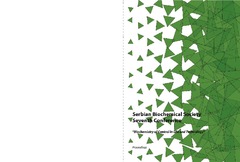Приказ основних података о документу
Ibogaine redox potential - the effects on antioxidant enzymes after ingestion
| dc.contributor | Spasojević, Ivan | |
| dc.creator | Vidonja Uzelac, Teodora | |
| dc.creator | Tatalović, Nikola | |
| dc.creator | Koželj, Gordana | |
| dc.creator | Oreščanin Dušić, Zorana | |
| dc.creator | Nikolić-Kokić, Aleksandra | |
| dc.creator | Spasić, Mihajlo | |
| dc.creator | Paškulin, Roman | |
| dc.creator | Bresjanac, Maja | |
| dc.creator | Blagojević, Duško | |
| dc.date.accessioned | 2020-12-08T09:15:56Z | |
| dc.date.available | 2020-12-08T09:15:56Z | |
| dc.date.issued | 2017 | |
| dc.identifier.isbn | 978-86-7220-091-1 (FOC) | |
| dc.identifier.uri | https://radar.ibiss.bg.ac.rs/handle/123456789/4045 | |
| dc.description.abstract | For centuries, plant T. iboga was used in African tribal communities for different ritual purposes. Beseades its stimulant effects in the last few decades ibogaine has been used as antiaddiction supstance against nicotine, alcohol, stimulants and opiates 1. Ibogain is not registered as a cure, but it is posibile to purchase capsule with ibogaine through websites 2. Ibogaine binds to different types of receptors and neurotransmitter transporters in brain 3. It also influences cellular energy, redox state and antioxidant capacity in a dose- and timedependent manner. In yeast, ibogaine decreases cellular ATP level and increases CO2 production in the first hour after exposure, followed by increased cellular respiration and the production of reactive oxygen species (ROS) after 5 h 4-6. Ibogain is metabolized in the liver by CYP2D6, and its pharmacologically active metabolite noribogaine is formed by demethylation. Both are excreted via gastrointestinal and renal tracts within 24 h 3. In this experiment 30 male Wistar rats, 3 months old, 200-250 g body weight (b.w.) were treated per os once with either 1 or 20 mg/kg b.w. of ibogaine. After 6 h and 24 h from treatments, the concentrations of ibogaine and noribogaine were measured in the blood plasma, as well as the activity of antioxidant enzymes: catalase (CAT), glutathione peroxidase (GPx), glutathione reductase (GR) and superoxide dismutase 1 (SOD1) in erythrocytes and liver. In liver, the activity of SOD2 and glutathione S transferase (GST) were also measured. The control group was treated with dH2O. All studies were approved by the Local Animal Care Committee. Measurement of ibogaine and noribogaine concentrations in the blood plasma showed dominant presence of noribogaine against ibogaine 6 h after treatment, while after 24 h only noribogaine was present in traces. The concentration of ibogaine and noribogaine was higher in the group treated with 20 mg/kg b.w. The presence of noribogaine in higher concentrations than ibogaine 6 h after treatment is consistent with pharmacokinetics of ibogaine. Our results showed that ibogaine treatment with both doses did not change the activity of antioxidant enzymes in erythrocytes and liver after neither 6 nor 24 h. After entering the circulation, ibogaine quickly becomes available to tissues. After the first pass in liver, it is metabolized to noribogaine that is also pharmacologically active 3. However, despite liver activity in ibogaine metabolism and transformation that additionally produce ROS and ibogaine redox potential, no changes of the activity of antioxidant enzymes were measured in the liver. It is possible that ibogaine in applied doses is not so effective or liver has large antioxidant potential and resolve ibogainemediated redox disequilibrium much earlier than 6 or 24 h. Ibogine in vitro affected the activity of SOD1 and GR in erythrocytes, but in higher concentration and for 1 h period 6. Treatment with ibogaine in this experiment yielded lower amount of ibogaine in the blood plasma that could influence erythrocytes antioxidant enzymes and the activity measurements were performed after 6 and 24 h. That’s are some of possible explanations for the lack of changes in the activity of antioxidant enzymes in erythrocytes in this experiment. Our previous results on ileum (where changes of the activity of antioxidant enzymes were measured) suggests tissue specific ibogaine influence and a combination of its pharmacological and redox mediated effects 7. | en |
| dc.language.iso | en | sr |
| dc.publisher | Belgrade : Faculty of Chemistry | sr |
| dc.publisher | Belgrade : Serbian Biochemical Society | sr |
| dc.relation | info:eu-repo/grantAgreement/MESTD/Basic Research (BR or ON)/173014/RS// | sr |
| dc.rights | openAccess | sr |
| dc.source | Serbian Biochemical Society Seventh Conference with international participation; Biochemistry of Control in Life and Technology; Proceedings | sr |
| dc.title | Ibogaine redox potential - the effects on antioxidant enzymes after ingestion | en |
| dc.type | conferenceObject | sr |
| dc.rights.license | ARR | sr |
| dcterms.abstract | Орешчанин Душић, Зорана; Благојевић, Душко; Николић Кокић, Aлександра; Спасић, Михајло; Пашкулин, Роман; Бресјанац, Маја; Таталовић, Никола; Кожељ, Гордана; Видоња Узелац, Теодора; | |
| dc.rights.holder | © 2017 by the Serbian Biochemical Society | sr |
| dc.description.other | Spasojević I, editor. Biochemistry of Control in Life and Technology: Serbian Biochemical Society Seventh Conference with International Participation. 2017 Nov 10; Belgrade, Serbia. Belgrade: Faculty of Chemistry; 2017. p. 211-2. | en |
| dc.citation.spage | 211 | |
| dc.citation.epage | 212 | |
| dc.type.version | publishedVersion | sr |
| dc.identifier.cobiss | 249132044 | |
| dc.identifier.fulltext | https://radar.ibiss.bg.ac.rs/bitstream/id/7913/SerbBiochemSocSeventhConf-211-212.pdf | |
| dc.identifier.rcub | https://hdl.handle.net/21.15107/rcub_ibiss_4045 |

